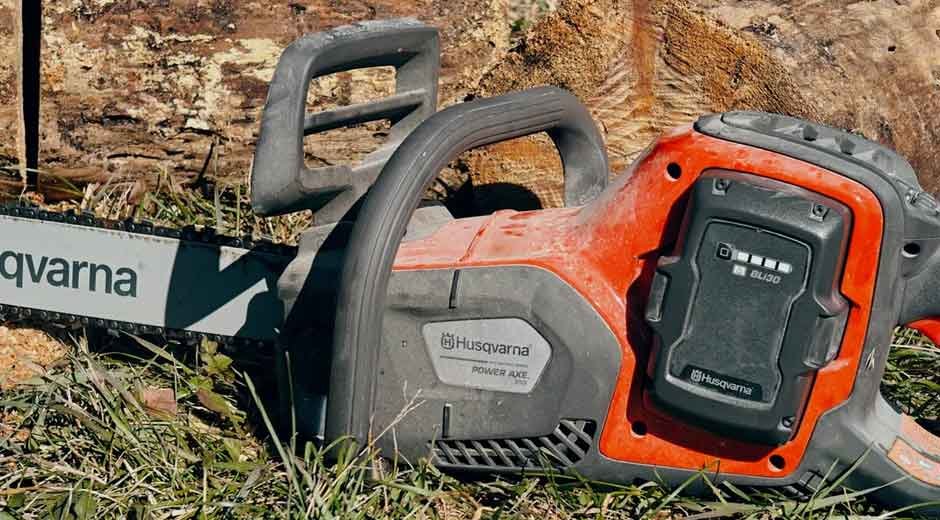Using an electric chainsaw can make cutting wood faster and more efficient, but only if it’s handled with the right technique and a strong focus on safety. It’s not just about pulling the trigger and going for it. You need to know how to control the tool, protect yourself, and keep your cuts accurate and clean. Whether you’re pruning branches, slicing firewood, or tackling a small tree, understanding the correct process can make a big difference.
Let’s walk through everything that matters when it comes to using an electric chainsaw safely and effectively.
Start with the Right Setup
Before making a single cut, you need to prepare properly. That doesn’t just mean putting on a pair of gloves and hoping for the best. It means checking your gear, the tool, and the environment.
Gear up first
You’ll want full protective clothing. At a minimum:
- Helmet with face shield– Keeps your eyes and head safe from flying debris
- Cut-resistant gloves– Improves grip and protects your hands
- Chainsaw chaps or pants– Reduces injury if contact is made with the saw
- Ear protection– Electric chainsaws are quieter than gas models, but still loud enough to damage hearing
- Non-slip boots– Adds stability on uneven ground
Don’t skip anything. A moment of discomfort is worth it if it prevents injury.
Check your chainsaw
Take a minute to inspect your electric chainsaw before starting. Look for any loose parts, a slack or dull chain, or signs of damage. Make sure the chain brake is working. Also, confirm the battery is charged or the power cord is safely positioned and free from cuts or wear.
If your chain isn’t sharp, your cuts won’t be clean, and your saw will need to work harder. That can lead to kickback or damage to the motor.
Understand the Basics of Chainsaw Safety
Operating an electric chainsaw requires physical control and awareness. Here’s how to approach it safely.
Position and grip matter
Keep both hands firmly on the saw, even if it’s lightweight. Your left hand should be on the front handle with your thumb wrapped underneath. Your right hand stays on the rear handle.
Stand with your feet shoulder-width apart. Keep your weight balanced. Don’t stretch or lean while cutting — if you can’t reach something easily, reposition yourself instead.
Be aware of kickback
Kickback happens when the tip of the chainsaw bar hits something solid, forcing the saw back toward you quickly. To reduce the risk:
- Never cut with the tip of the bar
- Keep the saw’s nose clear of branches and objects
- Hold the saw firmly and maintain good balance
Many electric chainsaws have built-in safety features to reduce kickback, but your grip and position are still the most important factors.
Making the Cut: Step-by-Step
Once you’ve set up, inspected your gear, and feel confident in your grip, it’s time to cut. But it isn’t about charging in fast. The goal is a clean, controlled cut.
Step 1: Plan your cut
Know exactly where you want to cut. If you’re cutting a log on the ground, make sure it’s stable. If you’re trimming a branch, check that it has a clear fall path. Don’t stand directly underneath any part you’re cutting.
Mark your cut if needed. Visual guides help keep your line straight and even.
Step 2: Start slowly
Ease into the wood. Don’t jam the saw in with pressure. Let the chain do the work. Press the trigger, let the saw reach full speed, and gently guide it through the material. Use a smooth motion.
If you’re cutting a thick log, go in from the top, then make a secondary cut from the bottom to avoid pinching the bar.
Step 3: Stay alert during the cut
Pay attention to the sound and feel of the saw. If it starts to strain, you may be applying too much pressure or the chain could be dull. Stop and inspect if anything feels off.
Keep your legs and feet out of the cutting path. Never try to cut something between your legs or while bracing it with your body.
Cleaning Up the Right Way
Once your cutting is done, resist the urge to toss the saw down and call it a day. Proper shutdown and cleanup are part of using an electric chainsaw safely and keeping it in good shape.
- Turn off the saw– If it’s battery-operated, remove the battery. If it’s corded, unplug it.
- Engage the chain brake– This helps prevent any accidental activation.
- Clean the saw– Use a brush or cloth to remove dust, sap, and debris from the chain, bar, and vents.
- Inspect the chain– Check for dullness, looseness, or damage. Adjust or replace as needed.
- Store it properly– Keep the saw in a dry, secure space, out of reach of children or pets.
Common Mistakes to Avoid
Even experienced users can make simple errors that lead to accidents or damage. Being aware of these common mistakes helps you stay one step ahead.
- Skipping gear– Just because it’s “only a few cuts” doesn’t mean you can go without protection
- Overreaching– If the saw isn’t at a comfortable angle, adjust your position instead of stretching
- Using a dull chain– This causes more kickback, slower cutting, and wear on the motor
- Forgetting about the power source– Tripping over cords or not managing the battery charge can be a problem
- Cutting in unstable positions– Make sure the wood you’re cutting is secure and won’t shift mid-cut
Mistakes often happen when people rush. Taking a few seconds to think and reset makes every cut cleaner and safer.
Keep It Sharp, Stay in Control
Cutting with an electric chainsaw should feel efficient and steady. It’s not about speed, it’s about accuracy and control. By gearing up properly, staying focused, and following the right steps, you can avoid unnecessary risks and end up with cleaner, more professional-looking results.
Chainsaws are powerful tools, but they’re only as safe as the person using them. Once you understand how to manage the tool — and yourself — the whole process becomes smoother, safer, and a lot more satisfying.











